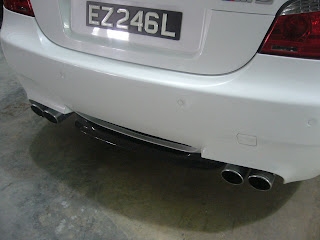Saturday, December 26, 2009
Wednesday, December 23, 2009
Formula Drift 2009 Malaysia Serdang Mardi
Here are some highlight shots from Msia Formula Drift 2009. Our partner Team Exotic Drift was part of this great event. Among the great drifters are Ryuji Miki from Japan, Mad Mike from New Zealand, Tengku Djan from Malaysia, Ser Ming Hui from Team Exotic Drift, Ivan Lim from Singapore and many others.
Tuesday, December 15, 2009
Bodykits & Parts for Aston Martin, Ferrari, Lamborghini, Bentley, R8, Maserati, Rolls Royce, etc
CarbonRevo is striving to be the best parts supplier in the marketplace for high-end luxury and exotic sports cars. CarbonRevo offers only the finest parts from the premier tuners from around the world. Combine this with superior customer service and CarbonRevo is probably the best in Singapore. CarbonRevo carries products from Novitec, Elite, Mansory, ASI, Premier 4509, as well as many other premier tuners.
Come On. Check us out and you will never be disappointed.
Come On. Check us out and you will never be disappointed.
Thursday, December 10, 2009
Monday, November 23, 2009
AEIMPEX is shifting to First Centre as of 28th Nov 2009
We are Expanding to serve you better! As of 28th Nov 2009, we will be shifting to 50, First Centre #02-09, Serangoon North Ave 4 S555859. Our Tel +6567488737 remains the same. Parking at our new place is a breeze when you can just park right in front of the shop.
Monday, November 16, 2009
CarbonRevo Mitsubishi Evo X Carbon Fibre Doors



These modifications are one of the best and extreme ones with a wow factor and good weight savings. They are a direct replacement which you will still be able to use your power window functions.
The weight of the Evo X Carbon Doors:
Front Doors: Only 12kg/pair and Rear Doors: Only 10kg/pair.
Full Carbon and Dry Carbon options are available too as well.
Wednesday, November 4, 2009
Tuesday, November 3, 2009
Monday, November 2, 2009
Saturday, October 31, 2009
Repairability of Carbon Fibre Parts
CFRC does offer some repairability, but the application, as well as the vehicle maker’s recommendations, must be followed. When CFRC is moulded into shape, the mixture of the resins and carbon are considered the primary bond. It is within this state that the part will be the strongest. All repairs to CFRC are considered secondary bonds, meaning the integrity of the repair depends on the adhesive properties of the repair resins or adhesives. The application of the part is probably the most important consideration. CFRC parts made for structural purposes are generally replaced when damaged. There is no way to guarantee that the repaired part will have the same strength as the original part.
Thursday, October 29, 2009
Lamborghini wants to develop a material stronger than carbon fiber
Nowadays, carbon fiber is one of the best materials out there, providing a great basis for many high end supercars which want the strongest body frame, but also the lightest one, so as to not hamper their performance.
But Lamborghini is already looking to the future, as it announced that the Lamborghini Advanced Composite Structures Laboratory has been created in order for specialists from the Washington University and the Boeing airplane company to work together and create a new material which will be superior to carbon fiber.
The goal of the Italian super car manufacturer is to pioneer research in the aerospace and aeronautical fields and implement the new materials which will result into cars and other things we use in our daily lives.
While certainly not something you would expect from an automaker which is famous for its flamboyance, we should certainly keep out fingers crossed for the research team there and hope that the future will be filled with lighter and more safer cars.
But Lamborghini is already looking to the future, as it announced that the Lamborghini Advanced Composite Structures Laboratory has been created in order for specialists from the Washington University and the Boeing airplane company to work together and create a new material which will be superior to carbon fiber.
The goal of the Italian super car manufacturer is to pioneer research in the aerospace and aeronautical fields and implement the new materials which will result into cars and other things we use in our daily lives.
While certainly not something you would expect from an automaker which is famous for its flamboyance, we should certainly keep out fingers crossed for the research team there and hope that the future will be filled with lighter and more safer cars.
Carbon Fibre Prices Quadruple
Better get your carbon fiber pieces now guys. The stuff has quadrupled in price from $5/lb about 4 years ago, to $20/lb today. What's behind this jump in price? Apparently Boeing and Airbus are buying up ALL the CF they can find to help build their new airplanes. The use of carbon in these new planes contribute to a 20% reduction in fuel costs. However, that means bad news for the rest of the people who need carbon to make their products. Like Saleen and Pagani who use CF exclusively in making their cars. Or the bike, sporting goods, and car accessories industries. So.. get your CF hoods and parts now while you can.
Builing Carbon Fibre In F1
F1 teams use carbon fibres, a pre-impregnated epoxy resin and an aluminium honeycomb layer, which is sandwiched between two layers of carbon fibre.
The chassis is usually the first part of the car to be built, due to the amount of time required. The main chassis usually comprises of about 8 parts (panels). The first stage of the manufacturing process is to build a solid (computercut) pattern, from which a mold for the panel is produced. The molds are constructed by laying a total of 10 layers of pre-impregnated (with resin) carbon fibre on top of each pattern to produce the mold. The production of the mold takes place in several stages, involving vacuum treatments, debulking and heating processes. The mold then has to be thoughroughly cleaned and prepared for use.
The next phase is the actual fabrication of a car part, made from sheets of pre-cut, pre-impregnated carbon fibre, which are carefully laid inside the molds. It is thereby vital orientate the carbon fibre sheets in pre determined directions in order to achieve the desired strength. A total of 5 layers of carbon fibre are laid, forming the outer skin of the chassis (to achieve a final, cured thickness of 1mm, a total of 3-4 layers of carbon fibre must be laid down).
The next stage of the process is to cure the carbon fibre in an autoclave. This exposes the carbon fibre to a number of temperature / pressure cycles according to the specific requirements of the materials and components being processed. During this treatment, the resin impregnated in the carbon fibre flows into the surrounding fibres and is activated, thereby curing the carbon fibre. Once the outer skin has been cured and cooled down, a honeyomb layer of aluminium is fixed onto the outer skin by a sheet of resin to ensure the materials stick stongly together. The chassis panel then returns to the autoclave for curing. After having cooled down again, one more layer, consisting of a number of pre-impregnated carbon fibre sheet is placed on top the existing skin, and again treated in the autoclave for a final time.
When the part is completely produced, it is sent to an evaluation department, and when proven good, it can be used for racing.
The chassis is usually the first part of the car to be built, due to the amount of time required. The main chassis usually comprises of about 8 parts (panels). The first stage of the manufacturing process is to build a solid (computercut) pattern, from which a mold for the panel is produced. The molds are constructed by laying a total of 10 layers of pre-impregnated (with resin) carbon fibre on top of each pattern to produce the mold. The production of the mold takes place in several stages, involving vacuum treatments, debulking and heating processes. The mold then has to be thoughroughly cleaned and prepared for use.
The next phase is the actual fabrication of a car part, made from sheets of pre-cut, pre-impregnated carbon fibre, which are carefully laid inside the molds. It is thereby vital orientate the carbon fibre sheets in pre determined directions in order to achieve the desired strength. A total of 5 layers of carbon fibre are laid, forming the outer skin of the chassis (to achieve a final, cured thickness of 1mm, a total of 3-4 layers of carbon fibre must be laid down).
The next stage of the process is to cure the carbon fibre in an autoclave. This exposes the carbon fibre to a number of temperature / pressure cycles according to the specific requirements of the materials and components being processed. During this treatment, the resin impregnated in the carbon fibre flows into the surrounding fibres and is activated, thereby curing the carbon fibre. Once the outer skin has been cured and cooled down, a honeyomb layer of aluminium is fixed onto the outer skin by a sheet of resin to ensure the materials stick stongly together. The chassis panel then returns to the autoclave for curing. After having cooled down again, one more layer, consisting of a number of pre-impregnated carbon fibre sheet is placed on top the existing skin, and again treated in the autoclave for a final time.
When the part is completely produced, it is sent to an evaluation department, and when proven good, it can be used for racing.
Wednesday, October 21, 2009
Subscribe to:
Comments (Atom)

















































